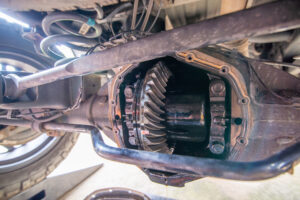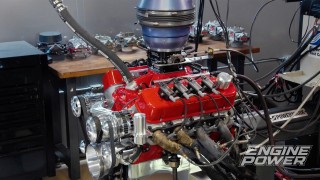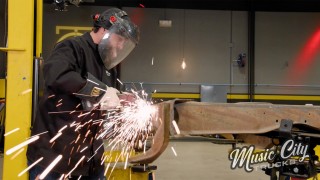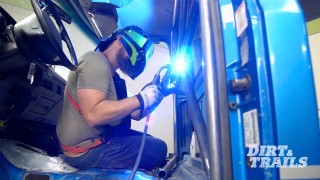What is EFI and When Should I Use it?

If you’re looking to get better efficiency and smoother performance out of your ride, Electronic Fuel Injection (EFI) might be just the thing for you. In this blog post, we’re going to explore some details of EFI conversions, covering different types, system requirements, wiring complexities, and tuning nuances.
Watch More about EFI from Pat and Frankie On YouTube
Types of EFI Conversions
If you have decided to give your engine a modern makeover with electronic fuel delivery you should know there are mainly two types of EFI conversions to consider: Throttle Body Injection (TBI) and Multiport Electronic Fuel Injection (MPEFI).
Throttle Body Injection Swaps:
These systems are like the electronic version of carburetors. They sit on top of your engine’s intake manifold, spraying fuel directly into the intake like a carburetor would. They’re relatively simple to install and wire up, making the transition smoother than you might expect.

Port EFI:
If you are looking for more top-notch performance, port fuel injection is the way to go. Instead of spraying fuel into intake plenum, each intake runner gets its own injector, delivering fuel right behind the intake valve. It’s a bit more complex to install, but the precision and control it offers are worth the effort, especially for enthusiasts serious about tuning.

EFI System Requirements
You should know that upgrading to EFI involves more than just adding injectors to your engine. You’ll need to upgrade your fuel system to handle the higher pressures required by EFI. That means investing in a stronger fuel pump, a reliable regulator, and injectors sized appropriately for your engine’s needs.
EFI systems rely on various sensors to keep things running smoothly. From crank and cam sensors to coolant and intake air temperature sensors, these components work together to ensure your engine receives the right amount of fuel at any given moment.

Wiring EFI Systems
Next, let’s dive a little into wiring – it’s a necessary part of the process, but it doesn’t have to be a nightmare. Modern EFI kits come with simplified wiring harnesses that make the process much more manageable. Throttle body setups are usually plug-and-play, while port EFI might require a bit more sensor wiring. If you are feeling adventurous and up to it, building a custom harness can bring modern technology to almost any engine, no matter how old.

Tuning EFI Systems
Tuning is arguably one of the most important parts when it comes to getting the most benefits out of your EFI system. With modern EFI systems, you have all the tools you need to fine-tune your engine’s performance to where you are hoping to get it. Self-learning algorithms make it easier than ever to dial in your air/fuel ratio without needing a degree in engineering.
However, if you’re dealing with a more extreme application – like with a turbocharged setup – you might need to delve into more specialized tuning. Custom fuel and timing maps require skill and understanding, but with the right software and knowledge, you can transform your ride into a true performance machine.

To wrap it up, EFI conversions offer a significant leap forward in engine performance, providing improved fuel control, efficiency, and drivability compared to traditional carbureted setups. So regardless of if you opt for throttle body simplicity or dive into the intricacies of port EFI, understanding system requirements, wiring essentials, and tuning nuances is crucial for a successful conversion. We are interested in learning what you are working on when it comes to EFI conversions. Visit our video on YouTube and drop a comment in the comment section.









